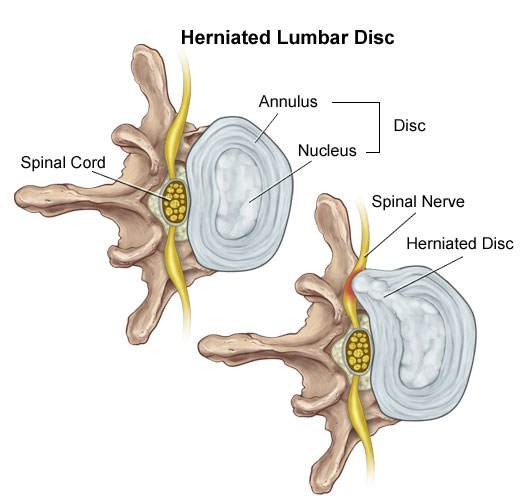The disc bulge is a typical cause of back pain and discomfort affecting millions of people worldwide. Situations like superimposed central protrusions, disc bulges abutting the nerve roots, the eccentric disc bulges, and paracentral bulges could all result in significant pain and mobility problems. Recognizing these issues and evaluating treatments that work is essential for managing the pain and enhancing your living quality. Dr. Ken Nakamura, a leading chiropractor, provides valuable insights into these conditions and provides guidance on how you can take care of them efficiently.
What is a disc bulge?
The intervertebral disc, which acts as a cushion between the vertebrae, expands beyond its boundaries, a disc bulge may result. It could happen because of wear and tear, injury or even degeneration as time passes. The amount of disc bulges vary from small protrusions that have few or no symptoms to more serious bulges that can result in pain and discomfort.

Superimposed Central Protrusion of Disc
A central disc protrusion that is superimposed is a particular type of disc bulge, which is found centrally within the spinal canal. Dr. Ken Nakamura says that the protrusion could cause the spinal cord to compress or even a nerve root which could cause symptoms such as pain, numbness or weakness. It’s challenging to treat this condition due to its central location, which can cause it to be felt on both the left and right sides of the body.
Disc Bulge Abutting Nerve Root Treatment
When a disc bulge abuts a nerve root, it may result in significant pain and neurological symptoms, like sciatica, which is a pain which radiates down your leg. If left untreated the pressure placed on the nerve’s root nerve may cause swelling, pain and eventually loss of function.
Dr. Nakamura explains how disc bulges located adjacent to nerve roots are addressed by a combination of conservative as well as, in some cases, interventional methods. Therapy, anti-inflammatory medication as well as a reduction in activity can be used as conservative treatments to reduce the pressure on nerves affected. In more severe cases, epidural steroid injections or surgery could be required to relieve the pain and relieve.
Eccentric Bulge
A disc bulge that is eccentric is a reference to an abnormal bulge off-center, typically to one side of the spinal canal. This type of bulge might result in unilateral symptoms, which means that pain and other problems are usually located on one side of the body. The bulges of the discs that are eccentric can be an issue, since they may cause pain, tingling or a weakness in a particular region.
Dr. Nakamura emphasizes the fact that treatment for an irregular disc bulge involves physical therapy that strengthens the muscles that surround your spine and improves flexibility. This can help reduce the stress on the affected disc, and help ease the symptoms. The treatment is a non-surgical procedure that can alleviate bulges and nerve irritation, is advised in some instances.
Paracentral Protrusion
Paracentral protrusion is a type of disc bulge that occurs near the center but slightly to one side of the spinal canal. Like other disc bulges, this may cause nerve root compression resulting in symptoms such as pain, weakening or numbness.
Dr. Nakamura advises that treatment for paracentral protrusion typically involves the use of a variety of conservative treatments, including physical therapy, pain management strategies, and lifestyle modifications. In severe cases of paracentral protrusion surgery is usually needed to eliminate the disc material that has protruded and also decompresses the nerve.
Manage Disc Bulge Pain
The treatment for disc-bulge pain varies on the severity of the condition and its symptoms. For mild-to-moderate cases of disc bulge treatments that are conservative are often efficient in reducing pain and improving function. They include:
Physical Therapy: Personalized exercises to strengthen muscles that support the spine, improve flexibility, as well as reduce pressure on the affected discs.
Pain Management: Make use of medications such as anti-inflammatory drugs to manage the pain, decrease inflammation, and ease muscle tension.
Lifestyle modifications: Adjustments to daily routines to avoid aggravate the condition, for example, the correct posture, ergonomic adjustments, and refraining from heavy lifting.
Interventional Treatments: When conservative treatments don’t work, you can think about options such as epidural steroids injections, or surgical procedures that are minimally invasive.
The end of the article is:
It is crucial to know the distinctions between conditions such as disc protrusions that are superimposed and disc bulges that touch neural roots, eccentric disc bulges, and paracentral protrusions in order to manage discomfort. Dr. Ken Nakamura stresses the importance of recognizing symptoms and seeking treatment to lessen the discomfort, increase mobility, and improve the quality of your life. Treatment of disc bulges are crucial to living pain-free by using conservative methods, or in some cases surgical intervention.